Love your local
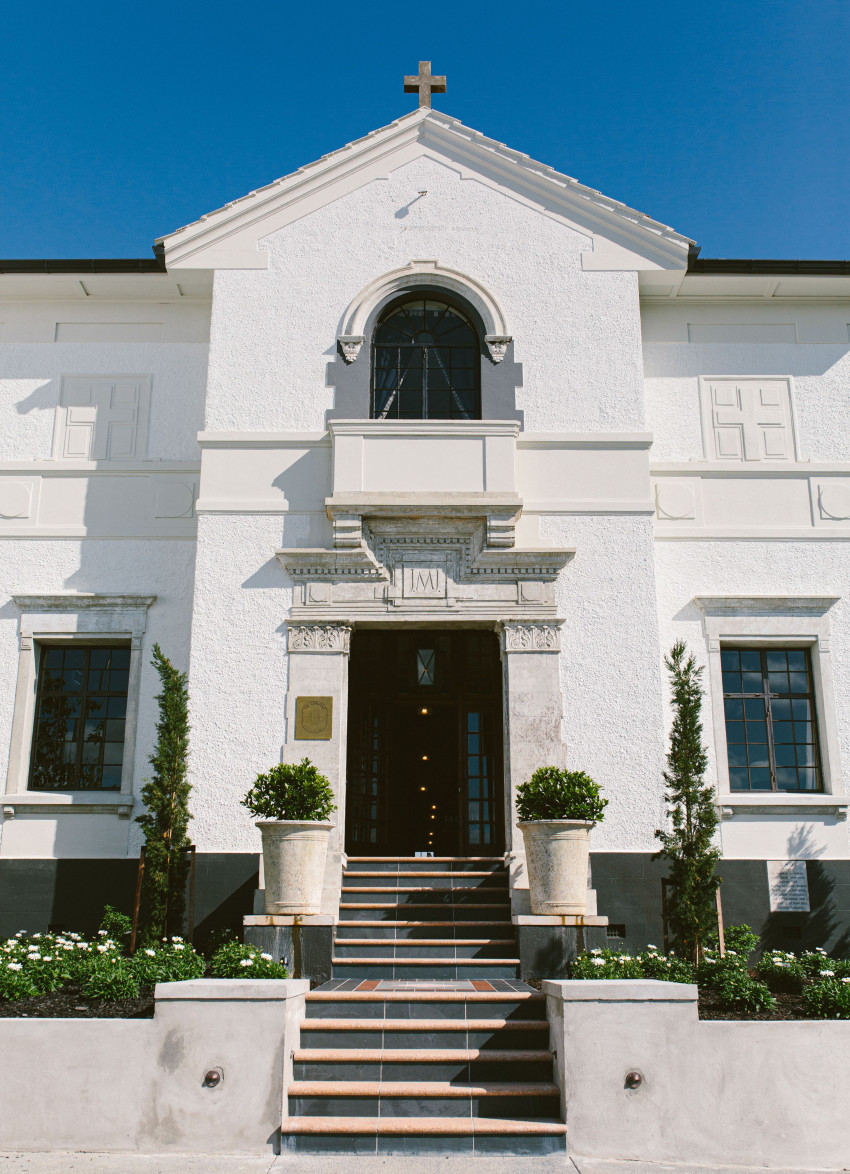
Local restaurants, cafés and pubs are the backbone of our hospitality industry. dish hears about the history of the local – and why it’s so important to protect it today.
Ah, the humble local. You know the spot – the fish and chippie everyone flocks to on Fridays. The cosy Thai place round the corner. The café where the staff know your name.
Locals – by which we mean these sorts of casual, neighbourhood spots, often family-run and long-standing – are important to the community in so many ways. Like the pub in England, they're an extension of the living room, welcoming you in for a casual bite and a bit of banter. At your local, you’re among... locals. You recognise people, and they recognise you. The staff have probably seen you in various stages of dishevelment – swinging past for a coffee on a busy morning or picking up dinner with your kids in tow. You can probably walk there from home.
As we emerge from the latest lockdown, which hit the hospitality industry hard, supporting local has never been more key. They’re a vital part not only of the food scene, but also the social scene, crucial as we emerge from isolation. But where did locals come from – and why are they so valuable?
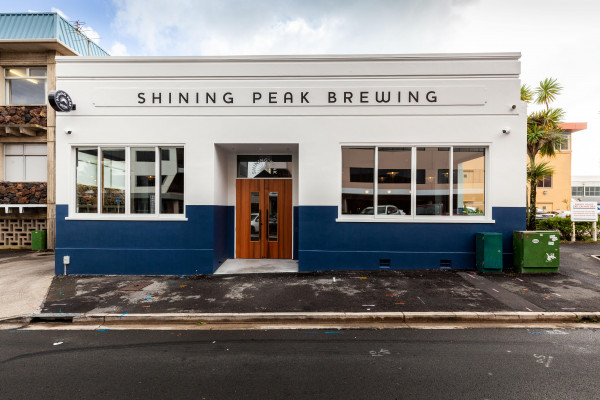
Shining Peak Brewing, a New Plymouth local favourite.
The history of the local
The restaurant in New Zealand has roots as far back as the nineteenth century. “Kiwis have this myth about ourselves that there were no restaurants here before the 1960s, because we’re far from the rest of the world and we had really arcane and weird liquor-licensing laws for a long time,” says Perrin Rowland, author of Dining Out: A History of the Restaurant in New Zealand. “But that couldn’t be further from the truth. In fact, evidence suggests there were restaurants in New Zealand as early as the 1840s.”
Casual dining was a necessary part of life for early settlers who didn’t have their own kitchens; stopping into a bar or hotel for a drink and a light snack was fairly common. However, dining as a casual, accessible treat, which is what locals today offer, is a more recent development. “The idea that you'd eat out when you don’t have anything in the fridge or that you go out for dinner every Thursday – that’s a relatively modern invention,” says Perrin. “The idea that we have so much money set aside for discretionary purposes that eating out is almost a form of casual entertainment didn’t come about until the twentieth century.”
The idea of dining out as a casual treat was really popular in the 1900s. Tearooms of the period typically offered light meals and tea in an informal, public setting – perfect for breaking up a day of shopping or visiting. One early example could be found in The Strand, a building on Auckland’s Queen Street which today houses a shopping arcade. The Strand Café had seating for 700 people, several different areas for men, women and (hold on to your hat) men and women together, around 15 cooks, air-conditioning and public bathrooms – a relative rarity for women especially at the time. It served lunch from 12-2, tea from 5-7 and afternoon tea for those after cake and strawberries.
“The Strand Café was absolutely an institution,” says Perrin. “But at the same time, it was still a casual restaurant because there were cash registers and everything was served within eight minutes.”
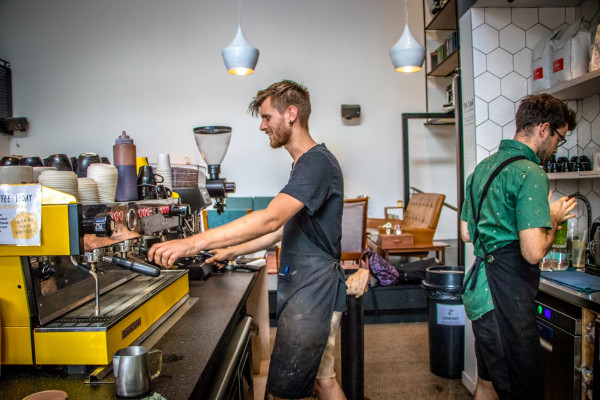
Baristas hold down the fort at busy Auckland local Crave Café.
Casual dining continued to develop following the Second World War for various reasons: more women entering the workforce diminished their ability to cook at home; returning soldiers found themselves with excess leisure time; teenagers became a recognised social group and wanted to eat out with their friends; and lots of people of different classes began eating out, which meant more demand for cheap, casual food.
Perrin says the 1950s saw a boom in what we might call “working men’s restaurants”, which served foods that have become Kiwi touchstones: steak and chips, poached eggs on toast, hot pies, fish and chips and so on. Next, the 1960s and 1970s saw the first restaurant licenses issued – which meant restaurants could serve alcohol alongside food – and the growth and diversification of the dining scene. The first Cobb & Co. opened in 1973, offering a casual menu of steak, hamburgers and seafood, and gradually became an institution, with 37 outlets nationwide at its mid-1980s peak. But in the same era, independent cafés took off and food itself – rather than ambience or status-signalling – became the focus.
Non-western cuisine also slowly became more mainstream. Chinese restaurants, for example, existed as far back as the 1860s and were often more casual spots – but it was only in the late twentieth century that they began to be patronised by non-Chinese diners.
In sum, Perrin says, New Zealand has had some version of the local for over a century – but the way we use that local has changed. The local – a place to get a convenient, casual meal not too far from home – has been variously a place to show off in fashionable society, stop for lunch as a worker, while away time as a veteran, meet your friends as a teenager and take the family for dinner when you can’t be bothered to cook. Nowadays, it serves a little of all these purposes and more – bringing the people of an area in touch with their community for something tasty.
Famed food
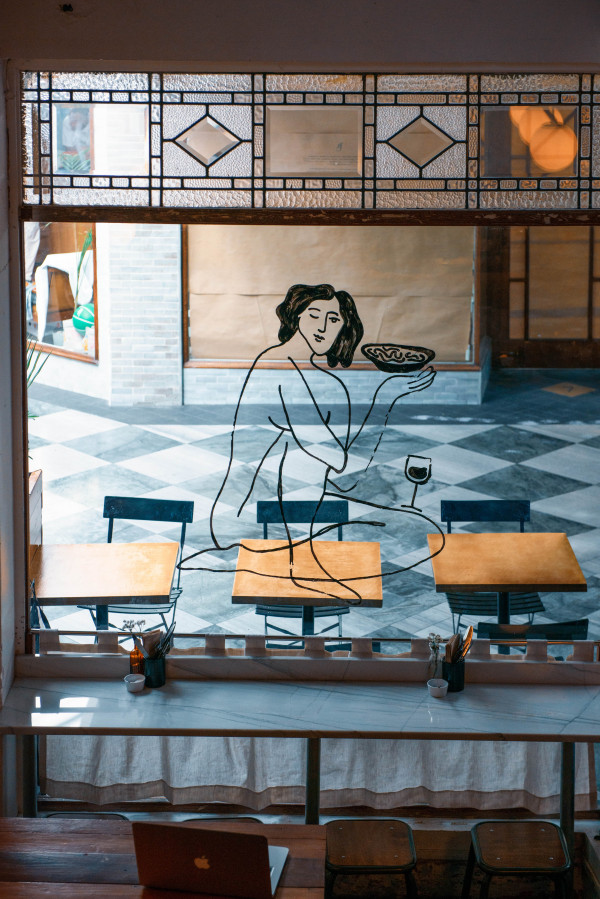
The front window of Pici on K' Road, Auckland, a favourite dish staff local.
Part of the appeal of locals is the food they serve, which tends to be simple, classic, family-friendly and affordable.
At local favourite TOAD Hall in Motueka, for instance, the classic lamb burger reigns supreme. “Our lamb burger has been a total staple for years,” says owner Angie Morris. “If you go on Trip Advisor, you’ll see it constantly mentioned. But our locals know it’s a classic too.” The café’s second most popular dish is a falafel platter, which caters to a growing vegan and gluten-free crowd.
TOAD Hall, which Angie and her husband have owned for 16 years, was originally a fruit and vegetable shop with a real fruit ice cream attachment. It’s since developed into a full café, selling fresh produce from the on-site garden, good coffee and quality food prepared on site. “Our food is simple, fresh and delicious,” says Angie. “It’s not fussy and there’s something for everyone."
Brunch – a repository of classic, affordable dishes – is perhaps the quintessential café meal and a popular offering for locals. At Crave Café in Auckland’s Morningside – a not-for-profit set up with the explicit mission of “making Morningside a better place to live” – eggs benedict is the most popular dish by far. “You have to give the people what they want,” chuckles manager Nigel Cottle. “You can’t get away from eggs bene. We sold more than 20,000 plates of it in 2020.”
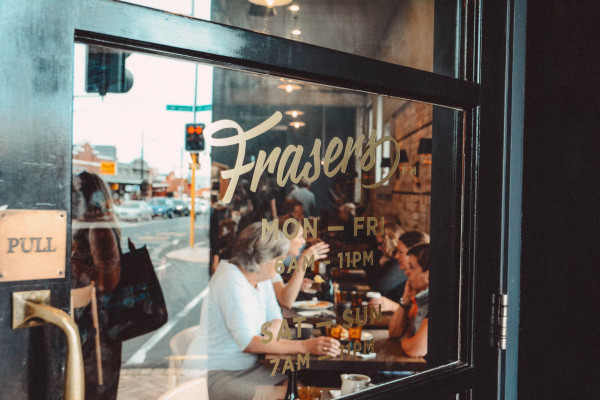
The front window of local café Frasers in Auckland's Mt Eden.
The success of locals also rests on their long-standing offerings. For Frasers Café, a local in Auckland's Mount Eden, it’s the cakes that steal the show – and have done for over two decades. “People love coming in for dessert,” says co-owner Paul Fraser. “Our New York Baked Cheesecake has been our number one seller for 23 years – and number two is our Banoffee Pie. About 75 percent of our pastry sales are just those two items.”
Even locals that haven’t been around long tend to be known for a few key items. Shining Peak Brewing in New Plymouth, for instance, does booming business in beers brewed on site, although it also offers food from chips and burgers to venison carpaccio. “We offer a great range, from very easy drinking to hoppy, complex stronger beers," says head brewer Jesse Sigurdsson. But the current top seller is a Hazy IPA – a murky, deeply slurpable 6.2 percenter. Before that, it was the lager. “Whatever the top beer is takes a big following around town,” says Jesse. “We definitely get people coming in just for that.”
Similarly, Thai food truck Jawl’s Kitchen Martinborough features a small but perfectly formed menu of five items. “People just love the Thai classics,” says Jawl Beary, the charismatic Thai powerhouse who opened the food truck two years ago as a side business to her main work of contracting vineyard workers. “I don’t need a long complicated menu to keep them coming back, if it's good!" Martinborough locals and savvy Wellingtonians agree, with crowds flocking to try the dishes on offer, from nutty larb to shattery-crisp spring rolls.
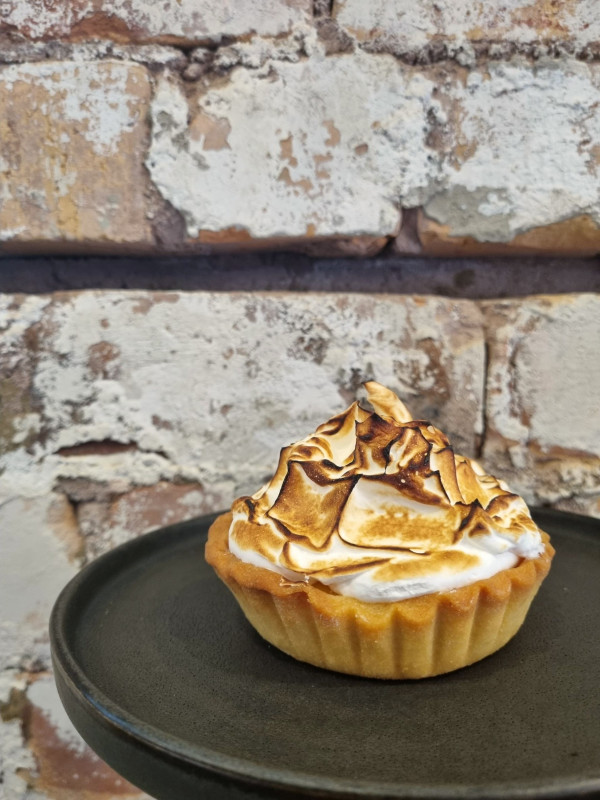
A treat from the famous Frasers cake cabinet.
In general, locals tend to offer tasty, simple dishes – nothing too prissy, but a step up from beans on toast at home. Their affordability, heartiness and classic status are what keep Kiwis coming back.
Community heroes
But the value of the local also lies in the opportunities it creates for its community – whether that's through employment, outreach or another form of engagement.
At TOAD Hall, employees are chosen for their ability to contribute to community. “Quite often we bring on people who might not necessarily be amazing candidates, but it’s very valuable to us that we invest in our community," says Angie. "The result is that we have a team who feel like they have meaning and purpose and belonging in this business.”
Crave, meanwhile, wants to help people to integrate into the community no matter what their background is. “We employ some people who can be difficult to employ,” says Nigel. “They might have been in jail or come from an addiction background or they might have a disability… we want to provide opportunities for people like that.”
Crave also puts its profits back into the community. In the past, it has hosted street parties, supported local kindergartens and schools and worked with mental health and housing providers to support those sleeping rough in the neighbourhood. One of its most successful projects has been commissioning murals to go around Morningside. The super-sized McDonald Street mural of two fingers touching – based on Michelangelo’s “The Creation of Adam” – has been in place for five years and become an icon. “So many people stop and get photos,” says Nigel. “There’s a sense of local pride that comes with that.”
Shining Peak Brewing, meanwhile, recently won an innovation award at the Taranaki Business Awards for its “5% Project”, which puts 5 percent of its beer revenues back into local organisations like Cystic Fibrosis Taranaki. In the two and a half years Shining Peak has been open, it has donated over $100,000 to such causes. “How it’s worked is just amazing,” says Jesse. “We get a lot of buy-in from the community and we probably clear 5 percent more business because of it, so it works out to be really sustainable.”
But making a difference to the community doesn’t have to mean donating profits. The Shining Peak team see plenty of engagement with the local stories drawing on Taranaki's history that they give to each new beer release. “They make everyone feel like they’re part of Taranaki,” says Jesse.
At TOAD Hall, meanwhile, a recycling programme educates local kids about sustainability. “We see real value in investing in our young people,” says Angie. “It’s great to teach the next generation in our community about sustainability at the same time as diverting waste from landfill here.”
A place for a chinwag

Crowds gather outside dish staff local favourite Barulho, in Auckland suburb Parnell.
Above all else, the local offers somewhere for people to connect to others in the neighbourhood, increasing an area's spirit and creating a pocket of in-person welcome even as the world gets more virtual.
Many locals offer an easy place to take your kids. Paul and Sandra took over Frasers in the hope of creating a café open long hours in their own suburb. “We would always be driving across town for a good cup of coffee or a piece of cake,” recalls Sandra. “I just thought, why can’t we get all of this in one spot near home? We also had young kids, so we were always going out to cafés – and I was always wishing places didn’t close so early.”
The story is similar at TOAD Hall. “When we took it over, there was nowhere we could go with our kids where we could feel relaxed, where healthy food was available and where the kids could run around,” says Angie. “We were condemned to Chipmunks and McDonald’s. We opened TOAD Hall to change that.”
Crave, meanwhile, tries to provide “something for everyone in Morningside”. Its 200-seat space offers meeting rooms for local businesses, a “library” space for quiet work and a general café space “for people catching up and mums with messy babies”, says Nigel.
In New Plymouth, locals head to Shining Peak to unwind at the end of the week. “On our quieter nights, we operate as a really solid restaurant," says head chef Freddie Ponder. "But on Friday afternoons or the weekend, it turns into a heaving brew pub. We're stacked to capacity pretty much every night.”
The lure of the local isn’t just about its accessibility, it’s also about its friendliness. Customers value being recognised by staff – a greeting at the door; a friendly chat; a regular order remembered – while staff value the ongoing support and sense of purpose.
“TOAD Hall has some incredible regulars,” says Angie. “There’s a lovely couple who come in religiously for Sunday lunch, and they know everyone's first name, remember everyone’s birthdays and give us Christmas cards and an enormous tip at the end of the year so the staff can have a party… I’ve felt very held by the community, especially these past two years. It really feels like we’re more than just a café.”
“For some of our regulars, Shining Peak is pencilled in their diaries every week," adds Jesse. “I think it's meaningful being a local business in a small community like this because it lets you build relationships! Plus, it's great to see people enjoying beer I've made."
At Frasers, Paul and Sandra have even seen their café shape customers’ lives long term. “We had a couple who met here on a blind date, got married, had a son and called him Fraser!” says Paul.

A dish of Guiso de Porotos (bean stew) from Barulho.
Meanwhile, Crave nurtures customer friendships with a big community table out front. “It’s a table you have to share,” says Nigel. “We put it there to symbolise the kind of community we want to foster, and I think it’s key that you have to walk past it to get inside.”
He's been delighted to see it adopted by regulars. “There’s a crew of older guys who didn’t know each other before meeting at Crave – but now every day there’ll be seven or eight of them just sitting there for hours, having a yarn. That’s pretty cool,” he says.
Long live local
The French word “restaurant” originally described a dense type of soup prepared for those feeling under the weather. It was essentially a tonic; a kind of eighteenth-century chicken noodle soup. “Restaurant” shares a root with the word “restore”.
In many ways, the modern-day Kiwi local epitomises the original mission of a “restaurant”. It’s a place dedicated to making your day a little better; to restoring you with the medicine of good food and community. And as chain restaurants proliferate and the world gets increasingly impersonal, the
cosy community-driven local has never been more precious.
dish local favourites
The dish team love to support local. Here are some of our favourites.
Claire: Barulho (Watt Street, Auckland) and Pici (K’ Road, Auckland)
Sarah: Hotel Ponsonby (St Mary’s Road, Auckland), Annabel’s (Ponsonby Road, Auckland) and Prego (Ponsonby Road, Auckland)
Yvonne: Asian Diner (Warren Street, Hastings) and Hunger Monger (Marine Parade, Napier)
Maddie: Receptionist Coffee (Lorne Street, Auckland) and Federal Delicatessen (Federal Street, Auckland)
Liam: One Tree Grill (Pah Road, Auckland) and Chaahat Indian Cuisine (Manukau Road, Auckland)
Karrin: Ada (Great North Road, Auckland) and Newton Fish & Chippery
(Great North Road, Auckland)
Josh: Apéro (K’ Road, Auckland) and Annabel’s (Ponsonby Road, Auckland)
Conor: Chinoiserie (Owairaka Avenue, Auckland) and Ol' Mate Avondale
(Great North Road, Auckland)
latest issue:
Issue #120
As the days become shorter, and the nights cooler, the latest issue is perfectly timed to deliver delicious autumn dishes. From recipes using fresh seasonal produce such as feijoas and apples, to spectacular soothing soups and super-quick after-work meals in our Food Fast section, we’ve got you covered. With Easter on the horizon, we feature recipes that will see you through breakfast, lunch and dinner over a leisurely weekend holiday, and whip up chocolatey baking treats sure to please. We round up delicious dinners for two and showcase a hot new Korean cookbook before heading south to Dunedin to check out all that’s new in food and dining.The latest issue of dish is on sale NOW at all good bookstores and supermarkets – don’t miss it!

